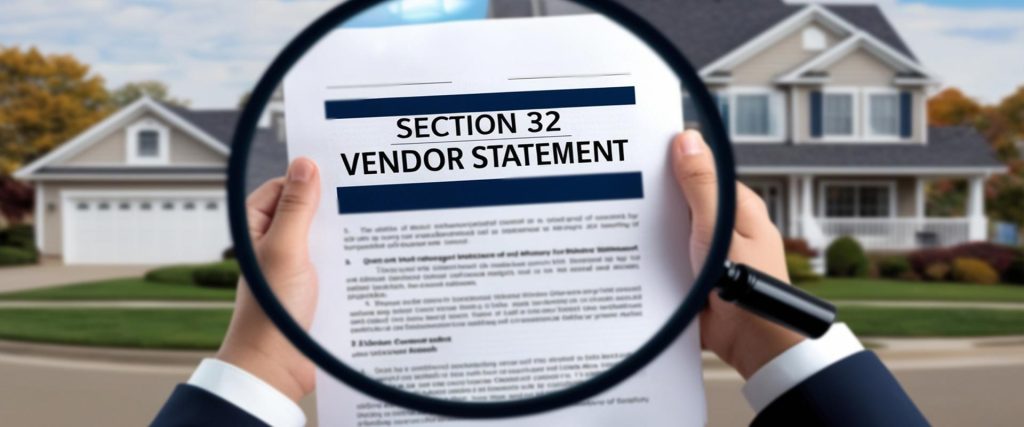Melbourne Central Conveyancing and Legal Pty Ltd
How Much Does a Section 32 Cost in Victoria? Here’s Why It’s Free with Melbourne Central Conveyancing!

Introduction
If you’re preparing to buy or sell property in Victoria, you’ve likely heard about the Section 32 vendor statement. This essential document plays a crucial role in real estate transactions, providing important disclosures to prospective buyers. But one question that often arises is: How long does a Section 32 last? Understanding the validity of a Section 32 is vital for both buyers and sellers to ensure the property transaction proceeds smoothly and legally. In this blog, we’ll explore the duration of a Section 32’s validity, the factors that can affect its relevance, and how to keep it up-to-date throughout the sale process.
What Is a Section 32?
Before diving into the validity period, let’s briefly recap what a Section 32 is. The Section 32 vendor statement, named after Section 32 of the Sale of Land Act 1962, is a legal document that the seller must provide to the buyer before the contract of sale is signed. It contains critical information about the property, such as title details, zoning information, easements, covenants, and outgoings like council rates and land tax.
The purpose of the Section 32 is to ensure that buyers have all the relevant information they need to make an informed decision. Without this document, the buyer may be unaware of potential issues or legal obligations tied to the property, which could lead to disputes or legal consequences down the line.
How Long Is a Section 32 Valid?
The Section 32 vendor statement doesn’t have a fixed expiration date. Instead, its validity depends on the accuracy and currency of the information it contains. A Section 32 is considered valid as long as the information provided remains accurate and up-to-date. However, several factors can affect its relevance over time, and sellers must ensure that the document is current at the time of the sale.
a. Changes in Property Information
One of the key factors affecting the validity of a Section 32 is any changes in the property’s information. For example, if new easements are added, zoning regulations change, or building work is carried out, the Section 32 will need to be updated to reflect these changes. If the information in the Section 32 is outdated or inaccurate, it could be considered invalid, potentially giving the buyer grounds to withdraw from the sale or take legal action.
b. Time Between Preparation and Sale
Another factor to consider is the time that has elapsed between the preparation of the Section 32 and the sale of the property. While the document doesn’t expire per se, if a significant amount of time has passed, it’s essential to review the Section 32 to ensure all the information is still accurate. This is particularly important if the property has been on the market for an extended period or if there have been changes in local regulations or property conditions.
c. Updates Required by Law
In some cases, updates to the Section 32 may be required by law, especially if new legislation or regulations come into effect that could impact the property. For example, changes in environmental laws, planning regulations, or land tax assessments may necessitate updates to the document to ensure it remains compliant and accurate.
Why Keeping Your Section 32 Up-to-Date Is Crucial
Maintaining an accurate and up-to-date Section 32 is crucial for several reasons:
• Legal Compliance:
Providing an outdated or inaccurate Section 32 can result in legal consequences, including the buyer withdrawing from the sale or even taking legal action against the seller.
• Buyer Confidence:
An up-to-date Section 32 reassures buyers that they have all the information they need to make an informed decision. This can increase buyer confidence and lead to a smoother transaction process.
• Avoiding Delays:
If issues are discovered in the Section 32 after an offer has been made, it can lead to delays in the sale process while the document is updated. Keeping the Section 32 current helps prevent these delays and keeps the sale on track.
How to Keep Your Section 32 Valid
To ensure that your Section 32 remains valid throughout the sale process, it’s important to take the following steps:
a. Regularly Review the Document
Periodically review the Section 32 vendor statement to ensure that all information is still accurate. This is particularly important if the property has been on the market for a long time or if there have been significant changes to the property or local regulations.
b. Work with a Conveyancer
Engaging a professional conveyancer, like the experts at Melbourne Central Conveyancing, is one of the best ways to ensure your Section 32 remains valid. A conveyancer can conduct the necessary searches, update the document as needed, and provide legal advice to ensure compliance with all relevant laws and regulations.
c. Update the Section 32 Promptly
If there are any changes to the property, such as new easements, changes in zoning, or recent building work, update the Section 32 as soon as possible. This ensures that the document remains accurate and legally valid at the time of sale.
Conclusion
The validity of a Section 32 vendor statement depends on the accuracy and currency of the information it contains. While the document itself doesn’t expire, any changes to the property or significant time gaps between preparation and sale may necessitate updates to keep the Section 32 valid. By regularly reviewing and updating the document, and working with a professional conveyancer like Melbourne Central Conveyancing, you can ensure that your Section 32 remains compliant and ready for a smooth property transaction.
If you’re selling property in Victoria and want to ensure your Section 32 is up-to-date and accurate, contact Melbourne Central Conveyancing today. We offer a free Section 32 preparation service to help you navigate the complexities of property sales with confidence.
